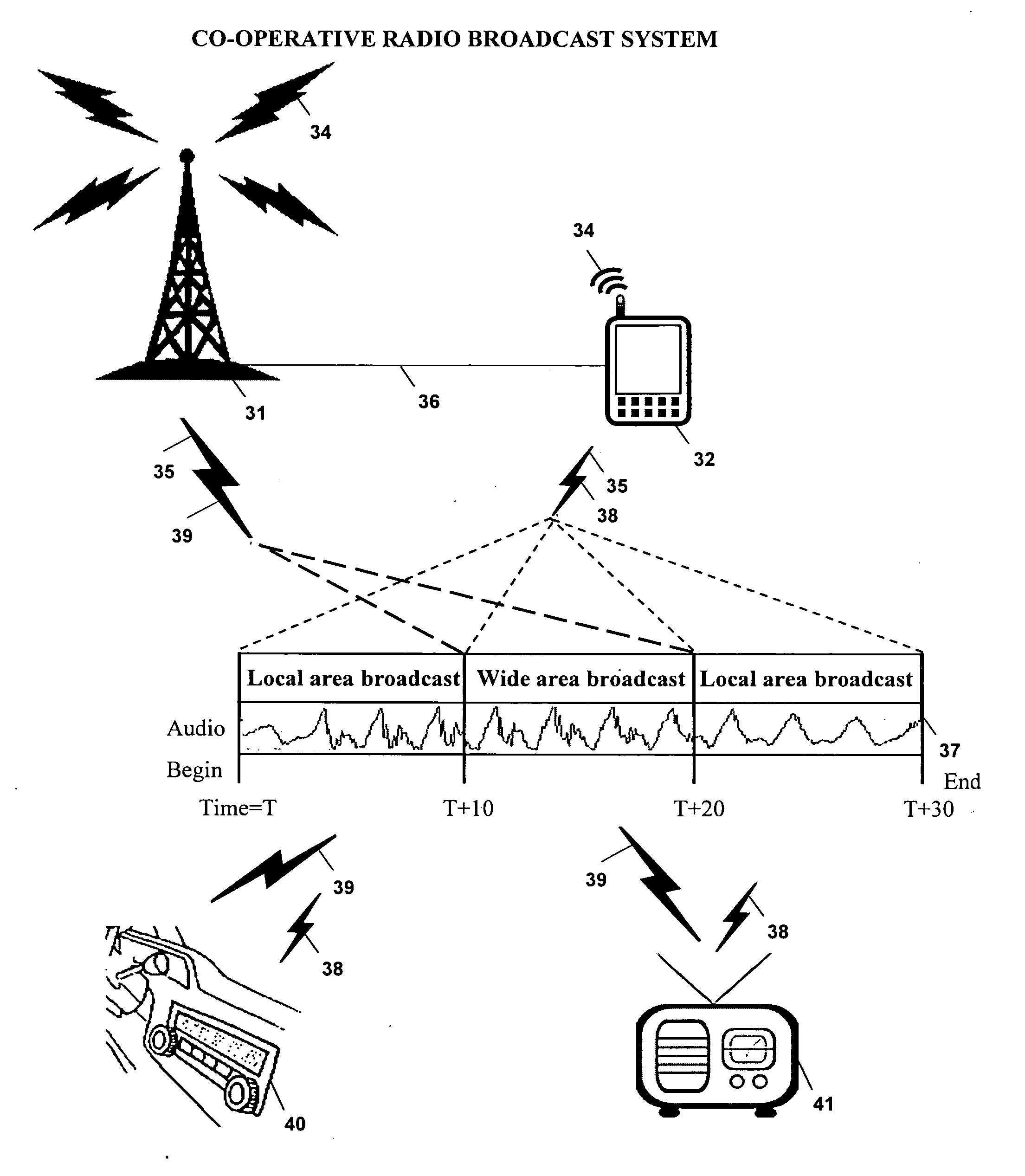Cooperative local and wide area radio broadcasting
a technology co-operation, applied in the field of radio broadcasting methods, can solve the problems of not addressing all automobiles, affecting the quality of local and wide-area radio, and avoiding collisions, so as to eliminate channel collisions and avoid collisions
- Summary
- Abstract
- Description
- Claims
- Application Information
AI Technical Summary
Benefits of technology
Problems solved by technology
Method used
Image
Examples
Embodiment Construction
[0111]In the following description, first a cooperative radio broadcast system is described, then details of a smartphone mobile device that has the capability to operate in relation to a wide area broadcast station is described. Then the method used for broadcasting in cooperative environment is described.
[0112]FIG. 1 shows a cooperative radio broadcast system in which wide area broadcast station 31 is coupled to smartphone 32 which is an embodiment of local area broadcast mobile device 33. Both broadcast station 31 and mobile device 33 use broadcast radio signals 34 to broadcast audio content into desired radio channel 35. Mobile device 33 is coupled to broadcast station 31 using one of several coupling algorithms 36. One such algorithm could be to allocate mutually exclusive time slots so that transmission from mobile device 33 does not overlap transmission from broadcast station 31. Such a transmission is shown using a broadcast timeline graph 37. Timeline graph 37 shows that fo...
PUM
 Login to View More
Login to View More Abstract
Description
Claims
Application Information
 Login to View More
Login to View More - R&D
- Intellectual Property
- Life Sciences
- Materials
- Tech Scout
- Unparalleled Data Quality
- Higher Quality Content
- 60% Fewer Hallucinations
Browse by: Latest US Patents, China's latest patents, Technical Efficacy Thesaurus, Application Domain, Technology Topic, Popular Technical Reports.
© 2025 PatSnap. All rights reserved.Legal|Privacy policy|Modern Slavery Act Transparency Statement|Sitemap|About US| Contact US: help@patsnap.com



